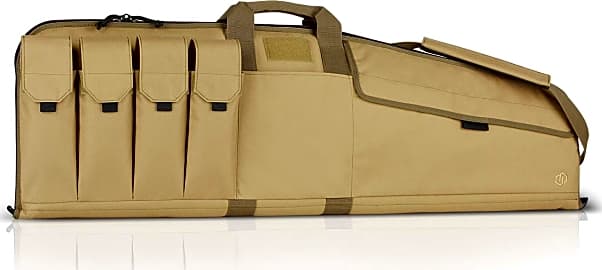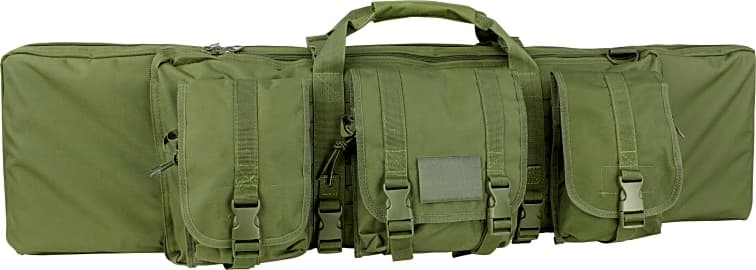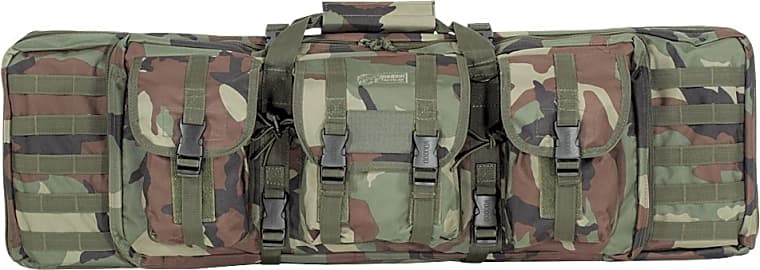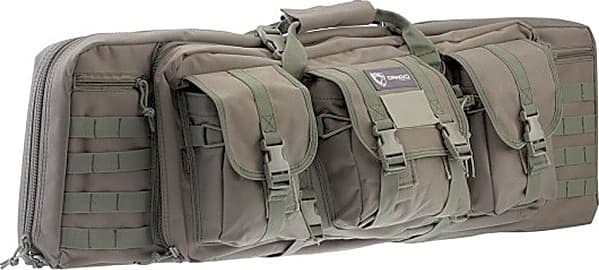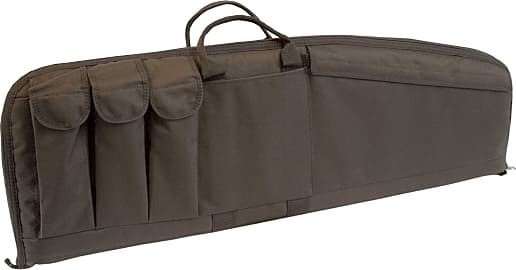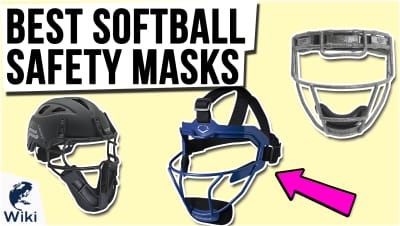The 10 Best Rifle Cases

This wiki has been updated 42 times since it was first published in September of 2015. All sporting shooters know protecting a firearm from the elements is essential, if you want it to perform flawlessly when needed. Our selection of sturdy rifle cases includes something for nearly every situation and outdoor adventure, so you can be sure all your weapons and accessories will be ready to go whenever you are — even if that just means making it easy to get from your car to the range. When users buy our independently chosen editorial choices, we may earn commissions to help fund the Wiki.
Editor's Notes
April 26, 2019:
The Plano Pro-Max Single missed the cut for this edition, as it had a tendency to let water in. While that's not always a huge deal, you don't want a bag you can't trust when the weather turns disagreeable. In its place we included the Savior Equipment Patriot, largely because it included a ton of storage options at a reasonable price.
While we're obviously fans of bells and whistles, we also recognize that some users just want something that will hold their rifles securely while traveling. For them, there's the Bulldog Cases Pit Bull, which is as bare-bones as it gets. Of course, that also means that it's about as inexpensive as it gets, and any money you save buying it can go towards getting more guns.
That being said, the Pelican 1750 retained the top spot because it's elegant and luxurious — everything the Pit Bull is not. It's also way more expensive, but it makes up for that by offering peerless protection to your rifles — and aren't they worth every penny?
Types of Rifle Cases
The double gun case is great if you often go hunting with a friend or need to carry more than one rifle at a time.
Whether you are an avid hunter or simply enjoy some target practice now and then, purchasing a quality rifle case is essential to effectively and safely transporting your weapon. You might think this purchase would be an easy choice, but there are a lot of options out there. All gun cases fall into one of two categories: hard gun cases and soft gun cases.
Hard gun cases are your best bet, especially if you do a lot of traveling. These cases offer the highest level of protection and are more durable than most other cases on the market. These cases have a soft, dense foam inside to keep your gun from sliding around and prevent damage. Depending on the quality of the case, you might be able to purchase one that is both waterproof and scratch proof.
Soft gun cases tend to be more affordable than hard gun cases, but they don't offer the same level of protection. They are made from a wide variety of materials including nylon, leather, neoprene, and even polyester. Because they are lightweight, they are easy to carry and are convenient for hunting trips. It is sometimes possible to find a soft gun case that is also waterproof.
Tactical rifle cases, while generally used by military or law enforcement, are available to the general public. While they come in both hard and soft styles, most are soft cases. They are lightweight and are usually made from a strong polyester and generally come in a variety of military colors. While they are originally designed for combat, they are great for transporting your favorite rifle to the shooting range.
The double gun case is great if you often go hunting with a friend or need to carry more than one rifle at a time. They can be purchased in both hard and soft cases, so the one your purchase depends on individual preference.
Decisions, Decisions
After you have reviewed the types of cases available and begun to determine which one might best meet your needs, don't stop there. You still have several considerations before settling on the right one.
You still have several considerations before settling on the right one.
First, decide what materials you want your case to be made from. Many hard cases are made from aluminum because it can withstand a lot of abuse. However, some hard cases are made from wood and provide a classic look. Keep in mind that these are often impractical and are more for show than anything. Other hard cases made from plastic and fiber-reinforced compounds are lighter and more durable than wooden cases and are more likely to protect your gun from damage.
Second, consider whether you will need a case that is waterproof. If you are an avid hunter and plan on being outside on a regular basis, a waterproof case might be a good investment. The biggest downside to a waterproof case is that it can lock moisture in as well as out. Make sure that there is no moisture inside the case or on your gun before closing it.
Your third consideration should be size. If you just plan on carrying a small rifle with no scope, a small gun case is a good choice. If you have a scope, a lot of accessories, or even a second rifle, a large single-gun case or even a two-gun case is a better investment.
Next, find out what types of locks, latches, and safety features you are going to need. Many gun cases come with holes for adding padlocks. If you are interested in safety features, you will need a lockable case. This goes a long way to protecting your firearm and securing it if you have children.
A Brief History of the Rifle Case
The rifle case would not be necessary without the rifle itself. Rifles were ultimately developed in order to improve accuracy in smooth bore muskets. An English mathematician in the eighteenth century named Benjamin Robins discovered that a long bullet was more aerodynamic than the average musket ball while maintaining the same level of momentum. Because the early rifles produced so much smoke and required immediate cleaning after each shot, they were limited to hunting and sharpshooter use for some time.
Because rifles are most commonly used by hunters, special state laws often govern whether or not the rifle should be carried in a case when being transported.
When minie balls were invented in the 1840s, the issue with slow loading rifles was solved, and they began to be used more on the battlefield. They were similar to muskets and were often called rifled muskets. Cartridges and breach-loading began to be used in the nineteenth century, and by the twentieth century, soldiers were being trained to make accurate long-range shots. By World War I, rifles were being fitted with sights for increased accuracy. Still, the technology was not well-developed, and it was discovered that machine guns were more effective.
Rifles have since developed over time and been greatly improved with sights and high-quality ammunition. They are most commonly used by civilians for hunting, but there are rifles, such as sniper rifles, that continue to be used by specially trained military personnel.
Because rifles are most commonly used by hunters, special state laws often govern whether or not the rifle should be carried in a case when being transported. Some states mandate that when traveling, the rifle must be unloaded with the clip removed and carried in a locked case in order to ensure complete safety.


